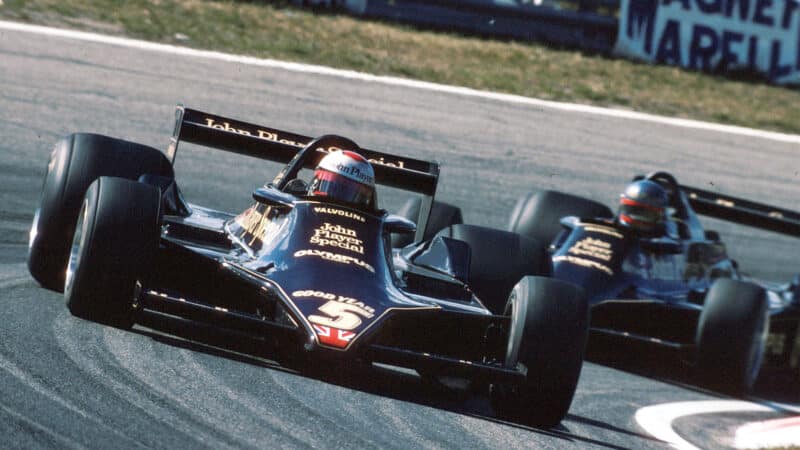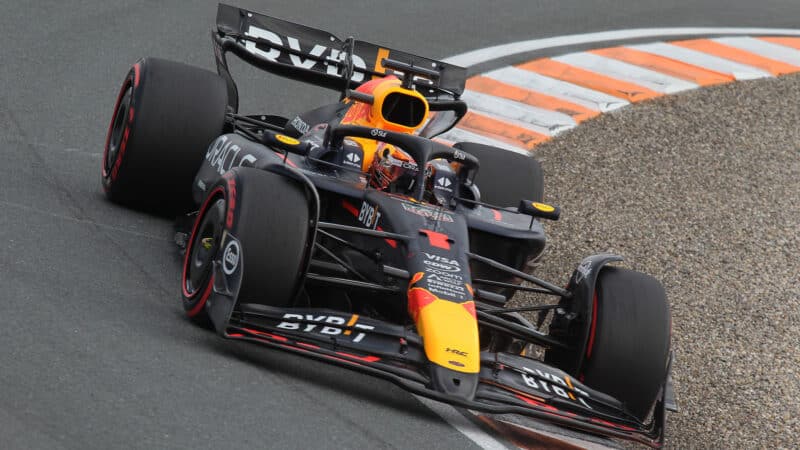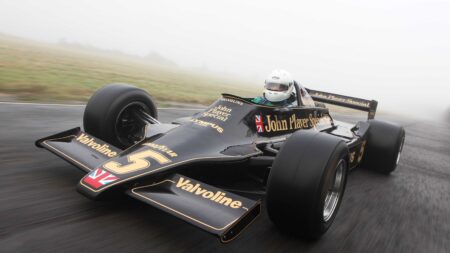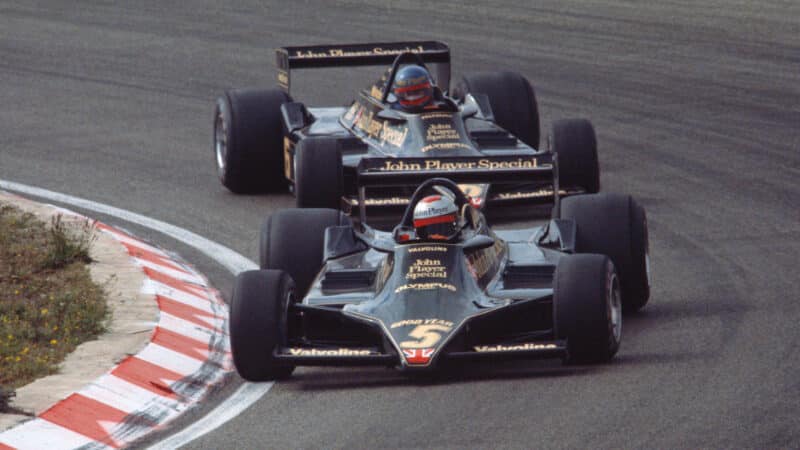It was a stupendously impressive performance by them. Granted, Niki Lauda did his best to put up a fight, finishing a gutsy third in his Brabham-Alfa BT46 (sans fan by then of course), but it was the manner of Mario’s and Ronnie’s ascendancy that was so striking. They had qualified first and second, the only two drivers to post laps that would stop the watches before 77 seconds had elapsed. On race day they set off in line astern, the American half a second ahead of the Swede, and they drove all 75 laps in that formation, unchallenged and therefore unruffled by Lauda’s stout-hearted efforts to keep up with them, smoothly pulling away from the Brabham-Alfa despite both their Lotuses developing mechanical gremlins, a broken exhaust that was costing his Cosworth DFV 400rpm in Andretti’s case and fading brakes in Peterson’s. Mario crossed the finish-line 0.32sec ahead of Ronnie; Niki, despite charging hard at the end, was a further 12.21sec behind.
It was Lotus’s eighth F1 grand prix win of the year, its third on the trot, and its fourth one-two. Afterwards Andretti said: “That was just fantastic. I know I’ve used that word a lot this season, but I honestly don’t believe the 79 has ever been better than it was today.”
Yet, as Verstappen and Red Bull are now only too well aware, F1 domination can be a fickle thing, and what happened after Zandvoort 1978 was not only unpredictable, and therefore unpredicted, but also tragic. Andretti, who had won 11 F1 grands prix for Lotus in a 21-month purple patch that had begun at Fuji in October 1976, never won one again; and Peterson, who, by driving quite magnificently throughout 1978, had silenced those who had wondered whether he might be past his brilliant best, not only never won again, but also never scored points again, and indeed never finished a grand prix again. The reason for that was that he was fatally injured in the next one he started, at Monza two weeks later. As Andretti famously said on the Monday morning after that cursed Italian Grand Prix, having just been told the shocking news that his team-mate and good friend had succumbed to his injuries in hospital overnight, “Unhappily, racing is also this.” So it was. So it is, for it will never be truly safe, but it is far less dangerous now than it was then, thank god.
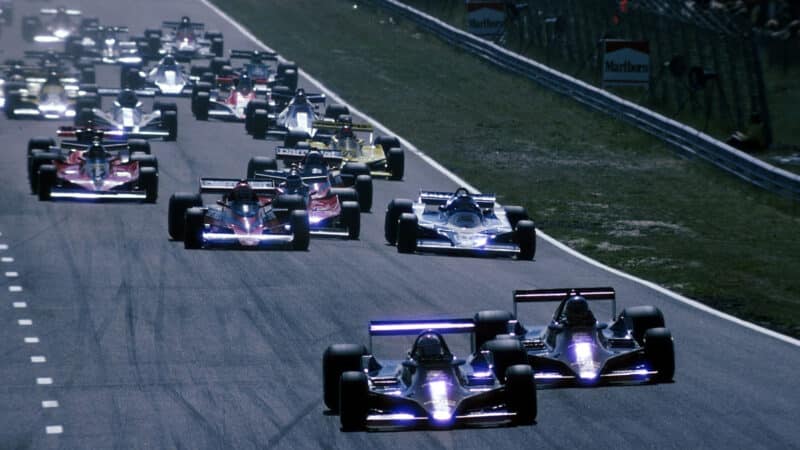
Lotus leads 1-2 off the line at Zandvoort ’78
Getty Images
Lotus’s 79 had harnessed ground effect technology so well in 1978 – or so we all thought at the time – that even F1 insiders assumed that Colin Chapman’s cars would kick off 1979 with their sizeable performance advantage intact. For that reason Carlos Reutemann, who had won four F1 grands prix for Ferrari in 1978, had no qualms about deserting the Scuderia to join Andretti at Lotus for 1979. As things turned out, neither Carlos nor Mario won a single race that year, for Ligier, Williams, and Renault had all created new cars that used ground effect science and technology far better than Lotus ever had, and Ferrari built a powerful and bullet-proof car in which Jody Scheckter, ably supported by his team-mate Gilles Villeneuve, made almost no errors in his diligent bid to win the F1 drivers’ world championship; he succeeded.
Reutemann left Lotus for Williams after that one disappointing season – which with the benefit of hindsight we can hail as a wise move – but Andretti stayed loyal to Chapman for a fifth consecutive year. Carlos did well at Williams in 1980 – he won at Monaco and finished third in the F1 drivers’ world championship standings – but it was an annus horribilis for Mario. Of the season’s 14 grands prix he saw the chequered flag in only five, and just one of those finishes was a points-scoring one: sixth at Watkins Glen. He joined Alfa Romeo for 1981, and he began the season with an encouraging fourth place at Long Beach, but his next 14 F1 grands prix that year yielded eight DNFs and six finishes, none of which troubled the scorers.

